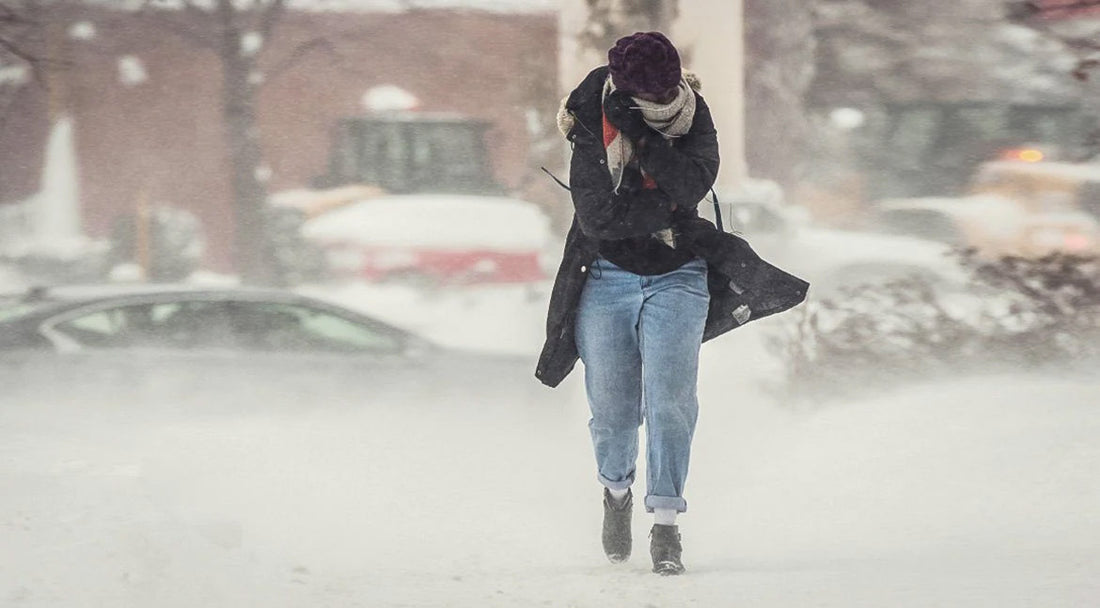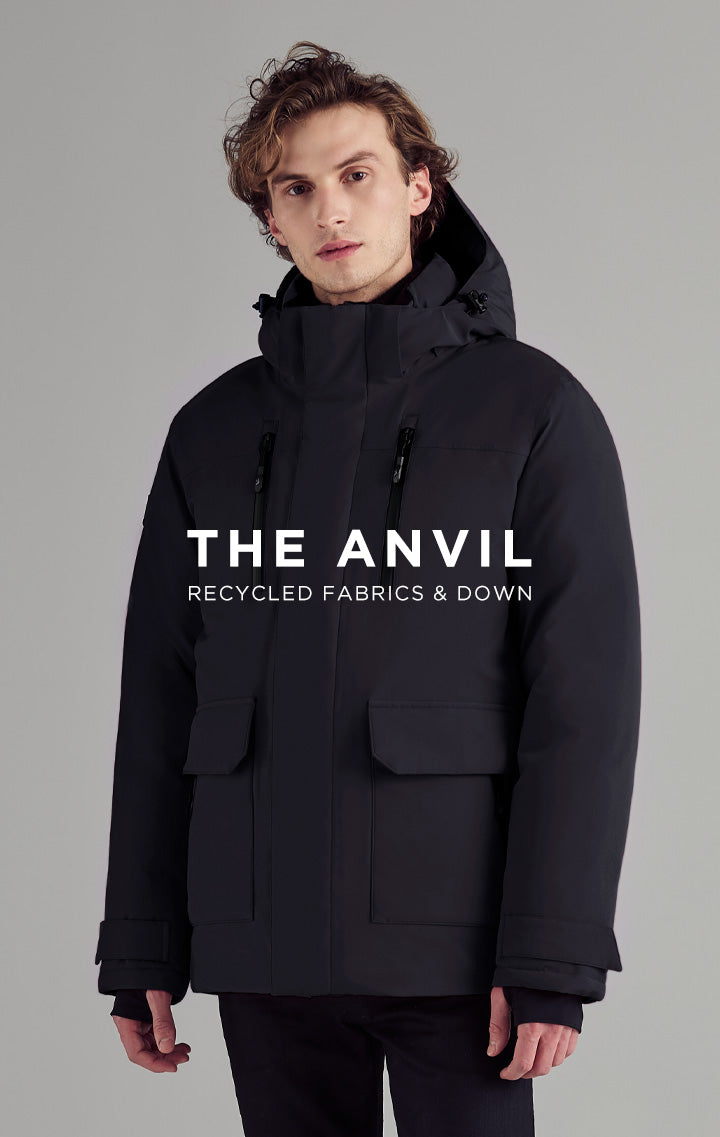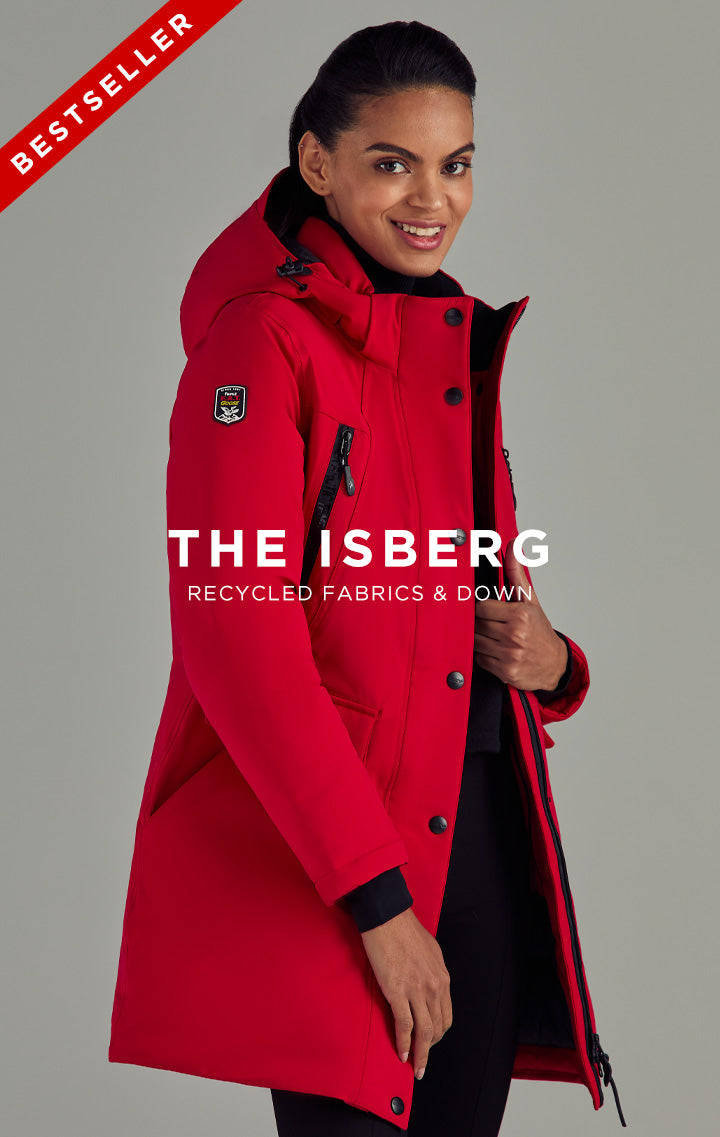Buying a down jacket to keep you warm in the winter is one of the most sensible things that we can do. After all, these coats are specifically designed to help us stay comfortable even when the mercury falls well below freezing. But what if you purchased a jacket, only to later discover that it didn’t quite keep you as warm as you had expected? What if instead, you find yourself just as cold as ever when outside in frigid conditions? Did you buy the wrong jacket? Did the manufacturer exaggerate its capabilities? Why exactly is your new down parka not living up to the hype? Here are a few reasons that could possibly explain why this is the case.

WHAT TYPE OF INSULATION IS IN YOUR JACKET?
One of the first things you should check on any down jacket is exactly what type of material is being used as an insulator. That may seem like a silly question, as the answer should probably be down, right? But as it turns out, some manufacturers will use synthetic substitutes, rather than natural down as an insulator instead. Depending on what material they actually use, this could end up leaving you feeling colder than you should be once the temperature starts to drop.
By examining the tags on the jacket you should be able to quickly determine the type of insulation that was used in its construction. If it's natural down, it should even tell you whether or not it is goose down or duck down. Both are efficient insulators, although due to the larger and thicker plumages, goose down will perform better than duck down. The tradeoff, of course, is that it also costs a little more, which will likely be reflected in the jacket’s price.
If the tag on the jacket indicates that it uses polyfill or synthetic down instead, that means that the insulating fibers aren’t made from goose or duck, but are a manmade polyester material. The fibers that make up those insulators have been woven together in such a way as to mimic the properties of down in terms of retaining warmth. While these materials do have a few advantages over down, such as better performance in wet conditions and a lower cost, they almost always fall short when it comes to providing warmth. They are generally heavier, less compressible, and aren’t as durable, which could affect the performance of the jacket in other ways.
The bottom line is, if your jacket isn’t as warm as you had hoped, the simplest explanation could be because it isn’t using down as an insulator. Synthetic insulators have their time and place of course, but when it comes to warmth-to-weight ratios and thermal efficiency, they just aren’t as good as down.

CHECK THE DOWN SPECS
If you’ve confirmed that the jacket does indeed use down as an insulator, there are other factors to consider as well. For instance, you’ll want to look over the specs of the garment to determine what quality of down was used, as well as just how much down was incorporated into it. This information could offer some helpful insights into exactly why your coat isn’t as efficient as it should be when it comes to keeping you warm.
The first number that you’ll want to look for is your jacket’s fill power rating. This is a number that indicates the overall quality of the down by rating its “loft.” That number usually falls between 300 and 900+. A quality down jacket should be 600 or higher. The higher the number, the better the fill power rating, which essentially amounts to a greater loft, which in turn translates to more warmth. If your jacket uses down that has a lower fill power rating, it could be one reason why you’re feeling colder when wearing it.
Fill power rating isn’t the only number to be concerned with however, as down weight plays a crucial role too. A jacket’s down weight is expressed in grams or ounces and is an indication of just how much down was used when making the jacket. Generally speaking, the higher the down weight, the warmer the jacket should be. Because of this, it is also possible for down that has a lower fill power rating—when used in larger quantities—to provide more warmth than a jacket with a higher fill power, but less insulation. It can also help to explain how a jacket with a 900 fill power rating, but a very low down weight, could potentially still leave you feeling cold.
At Triple F.A.T. Goose we openly share the fill power rating, down weight, and fill ratio for each of our products, which in turn provides greater transparency for consumers. As an example, our Chenega II and Stratus men’s parka use 15.5oz of white goose down with a 700 fill power rating at a 85/15 fill ratio. Those numbers were carefully chosen to ensure that those jackets deliver exceptional performance at an affordable price.
Learn more about Triple F.A.T. Goose, a brand with a 35 year history that has been featured in Outside, Esquire, Vogue, Elle, Men's Journal, Cosmopolitan, Robb Report, and more. All Triple F.A.T. Goose coats have a fill power rating of 700 and up. Shop the collection.
SHOP TRIPLE F.A.T. GOOSE

IT'S A SHELL GAME
Another important material that will have an impact on the amount of warmth your jacket provides is the fabric that is used to create its outer shell. This protective layer is tasked with keeping the elements at bay, creating a defensive shield against winter storms. If your jacket uses a material that isn’t especially good at keeping wind, rain, and snow from reaching the interior, you’re likely to find yourself getting very cold, very quickly. On the other hand, if the shell is well suited for those tasks, it will feel warmer as a result.
If you’re looking for improved thermal performance, the jacket you purchase should be waterproof, rather than water-resistant. Those two terms may seem like they have a similar meaning, but when it comes to performance, they differ in some subtle, but important ways. Fabrics that are waterproof are far more resistant not only to moisture, but to wind too, which will ultimately keep you warmer. And while waterproof shells are less breathable than water-resistant materials, the jacket will likely retain more body heat as a result.
Examples of this can be found on our men's Huron parka and our women's Ellaria parka, which use a three-layer, durable fabric to help keep the wearer warm. Those materials are both water- and wind-proof, making them ideal for use in a jacket designed to be worn in harsh conditions. Those same materials also happen to be very breathable too, but the fabrics have been engineered in such a way that they don’t allow cold air to creep in from the outside.

ASSESS THE ACCESSORIES
Finally, you’ll want to examine your jacket’s features and accessories to ensure that it is well equipped with everything it needs to keep you warm. For instance, some jackets come with a hood, while others do not. Having a hood improves a jacket’s warmth by providing added protection for the head and face. That level of warmth can be enhanced further with the addition of fur—either real or fake—along the brim of the hood as well. This is what is known as the “fur ruff” and it helps to not only keep cold air and snow from getting inside the jacket, but in preventing warm air from escaping out too.
Other features that you might find on a down jacket include storm cuffs and adjustable drawcords. Storm cuffs are usually made from stretchy materials—such as elastic—that are designed to fit snugly and prevent wind, rain, and snow from getting inside the coat. Simliarly, drawcords are usually found along the waist or the hood, and give the wearer the ability to adjust the fit of the jacket to fit their individual needs. Pulling the drawcords tighter cinch the jacket closer to the body. This helps to trap warm air inside, while once again preventing cold air from getting in.
In an effort to keep our customers as warm and comfortable as possible, most Triple F.A.T. Goose parkas and jackets include a hood, elastic cuffs, and drawcord toggles to adjust fit. Many of our hooded coats also come with fur-lined brims as well.

A WORD ON TEMPERATURE RATINGS
Another reason you may be feeling like your jacket isn’t as warm as you expected is because it may not be living up to the temperature rating that the manufacturer provided. Those ratings are meant to serve as an indicator of the lowest temperature that the jacket can be worn in and still keep its wearer comfortable. The problem is, temperature ratings are highly subjective and usually aren’t all that accurate. Because of this, some consumers might come away feeling like their new jacket is underperforming in the cold.
Part of the challenge of assigning a jacket a temperature rating comes from the fact that each individual person has a different level of tolerance when it comes to cold temperatures. Due to a variety of factors—including genetics, metabolism, diet, body composition, and other variables—what feels cold to one person may feel quite mild to someone else. Because it is impossible to account for every individual’s preferences, a jacket’s temperature rating may seem accurate for one person, but wildly inaccurate for another.
Temperature ratings also fail to take into account some very important atmospheric conditions that play a significant role in how comfortable we are when we’re outside. For instance, both humidity and wind chill can make us feel much colder than the temperature alone would indicate. Because a jacket’s temperature rating can’t factor those items into its equation, it will seem as if it is underperforming when worn in truly inclement weather.
Due to the inaccuracies and discrepancies that come along with temperature ratings, Triple F.A.T. Goose has elected to not use them as a way to measure how well our jackets and parkas perform. Instead, we rely on reviews from our customers to provide a more personal and relatable experience in terms of what to expect when using our garments in real-world conditions.
As you can see, there are a number of reasons why a down jacket might not feel quite as warm as you would expect. The quality and amount of insulation used in the garment will have a direct impact on the performance of course, but so will other materials too—most noticeably the jacket’s outer shell. The inclusion of accessories and features such as fur-lined collars, hand-warming pockets, and storm cuffs can make a difference as well, adding small, but noticeable touches that can provide better all-around performance. When shopping for a jacket, be sure to keep these factors in mind as you examine all of the options that are available.





